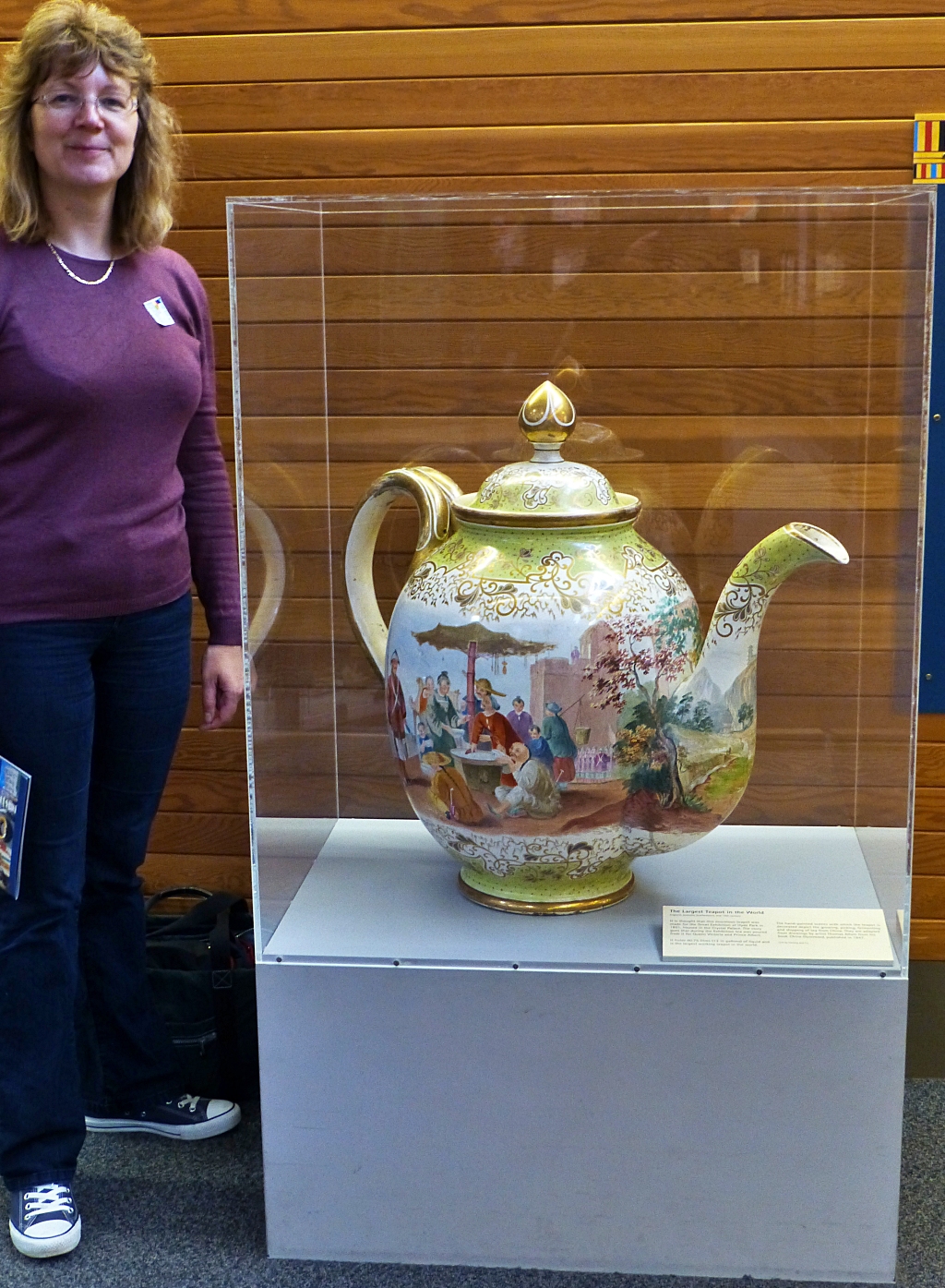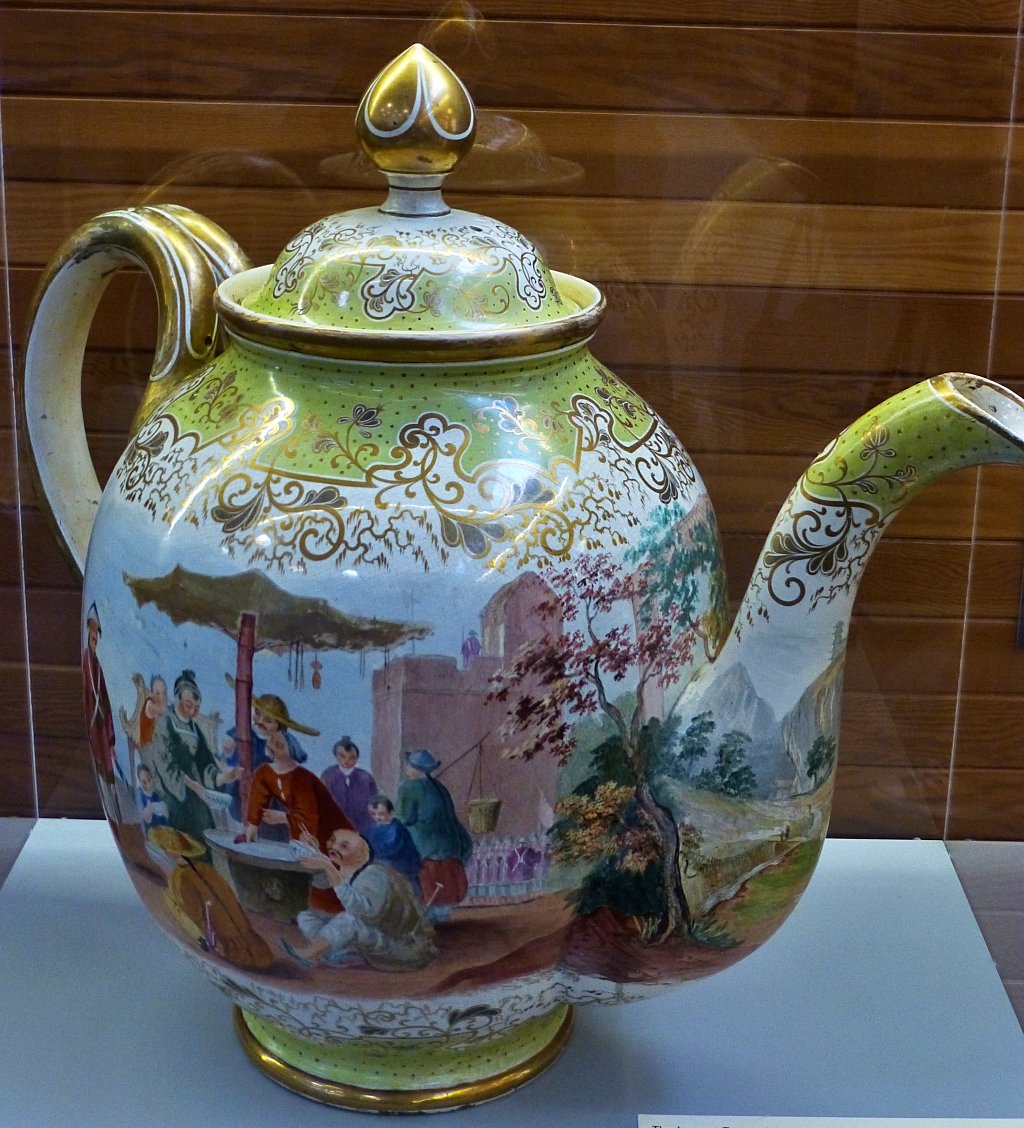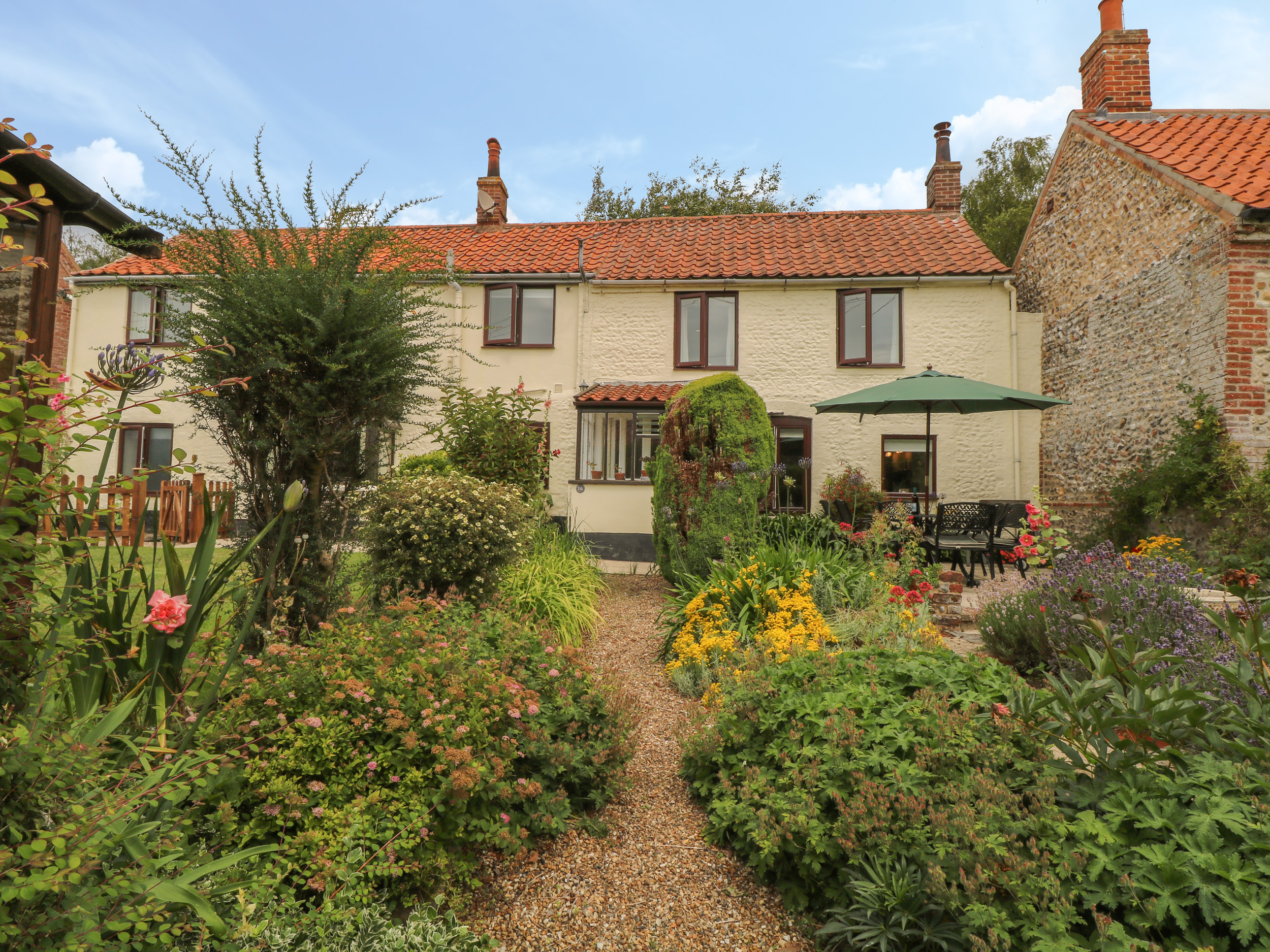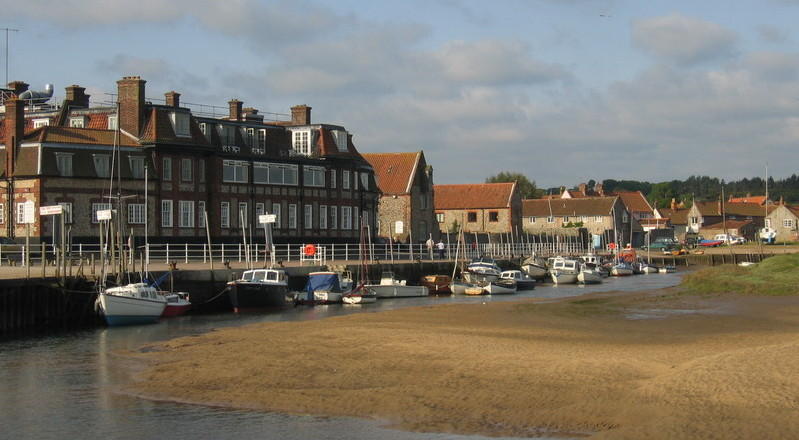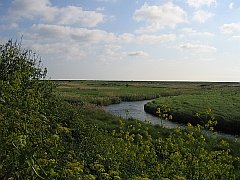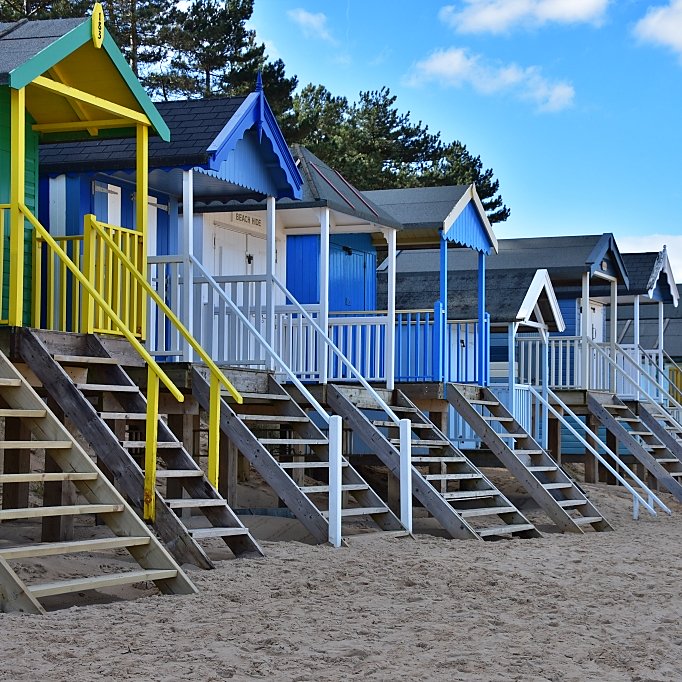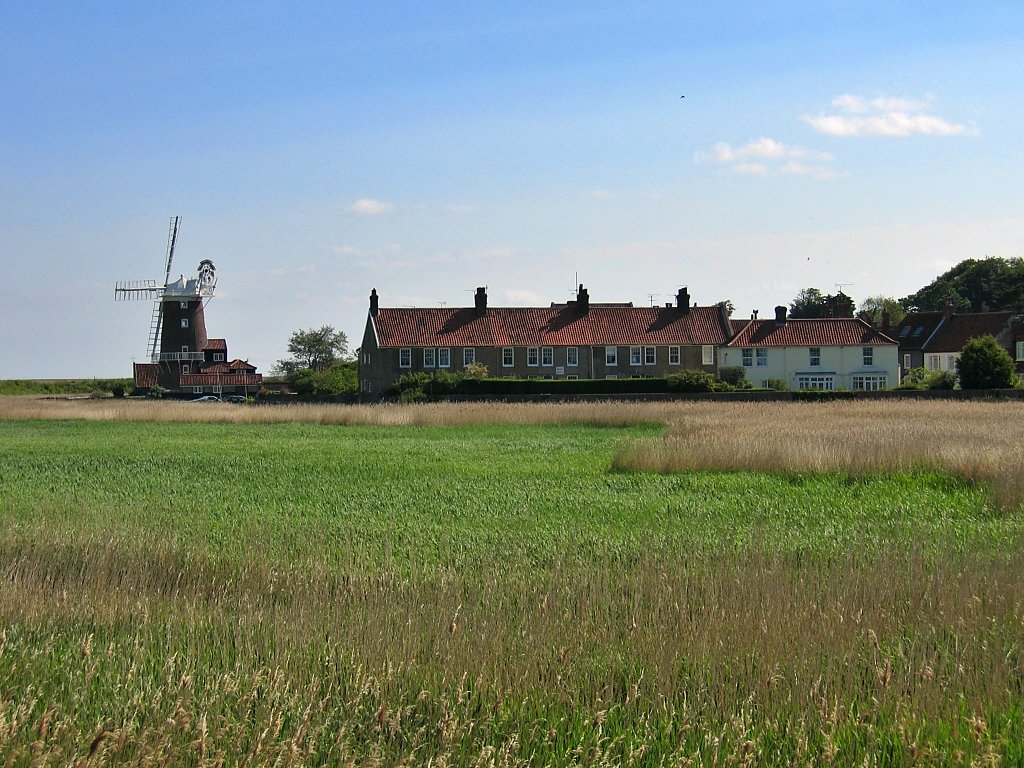Norwich Castle
One of England's finest Norman Keeps
When the Normans invaded England in 1066, Norfolk was one of England's richest and most populous counties. Its merchants traded across the North Sea, fish was plentiful around its long coastline and its fields were fertile and well-farmed.
To the invading Normans East Anglia looked like a veritable gold mine, promising a steady income and high taxes. So it's no wonder that bringing East Anglia under Norman control was one of William the Conqueror's top priorities.
And just as in the rest of England, they started with a castle. Something to impress the English and show them who ruled.
It wasn't a small castle they were planning, either. Once the Normans had chosen the ideal building site, they ruthlessly demolished anything that was in the way - including about a hundred Saxon homes.
Norwich Castle started life as a motte and bailey castle. A wooden fort sat atop the castle mound, surrounded by a complex of baileys and defensive ditches. It's been estimated that the whole complex spread across 23 acres and housed a garrison of Norman soldiers.
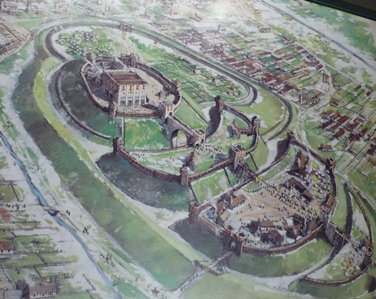 Norwich Castle as it might have looked just after the 1066 (Photo from Museum Information Panel)
Norwich Castle as it might have looked just after the 1066 (Photo from Museum Information Panel) © essentially-england.com
The First Siege
The famous stone keep of the castle hadn't even been started when Norwich Castle was besieged for the first time - and by none other than William the Conqueror himself.
The year was 1075 and Ralph Guader, the earl of Norfolk, plotted rebellion with his borther-in-law. William learned of the plot and moved to deal with it. Unfortunately, the earl was away on the continent raising his army, leaving his young wife Emma to face the enraged monarch. Emma bravely held the castle for three months, until William granted her safe passage out of England.
A Royal Residence
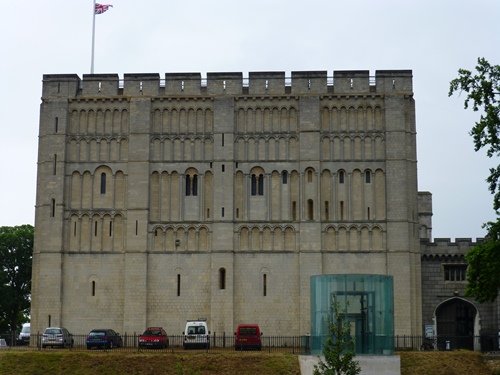 The famous white keep of Norwich Castle © essentially-england.com
The famous white keep of Norwich Castle © essentially-england.comThe castle keep that's Norwich's most famous landmark wasn't begun until 1094 once the earthen mound had settled. William Rufus, who started the building works, never actually saw the castle finished. He was killed during a hunting accident in the New Forest in 1100 and was succeeded by his younger brother, Henry, who eventually saw the keep completed in 1121.
By then, Norwich Castle had been developed into a lavish royal residence, seemingly floating in splendour above the town, the glowing white Caen limestone of the upper story in stark contrast to the building's base of dark flint.
We know but little of what went on in the Norman castle. The upper floor held a great hall and the royal quarters, including parlour, bedrooms and a chapel. The lower floor of the keep served as a storage space.
No Norman king ever lived in the castle and Henry I visited only once, at Christmas 1121.
Norwich Castle Recycled
East Anglia remained a rich and prosperous area, and over time the castle's military importance declined. In the 14th century, Norwich castle keep was turned into a prison - a function it held until 1883.
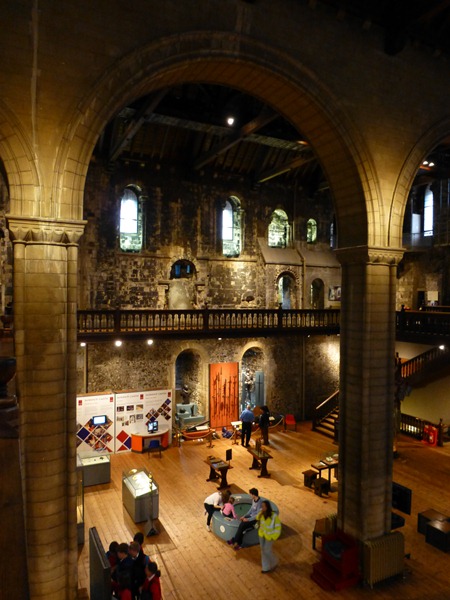 The Keep as a Museum
The Keep as a Museum © essentially-england.com
And since then? Rather than let it fall into ruin - a fate that befell many Norman castles in England - Norwich's impressive Norman keep has been turned into a museum. The badly weathered Caen limestone was replaced with Bath stone. The prison buildings were demolished and today, the castle tells the story of Norfolk's wildlife, artists and craftsmen. It tells of prison reform, describes Norfolk's history and even displays the largest collection of teapots in England.
The Teapot Collection
I must admit it's strange to find a teapot collection in a Norman castle, but here in Norwich Castle the collection covers many generations. From the comical to those with colourful patterns, and from big to small. Here are a few images…
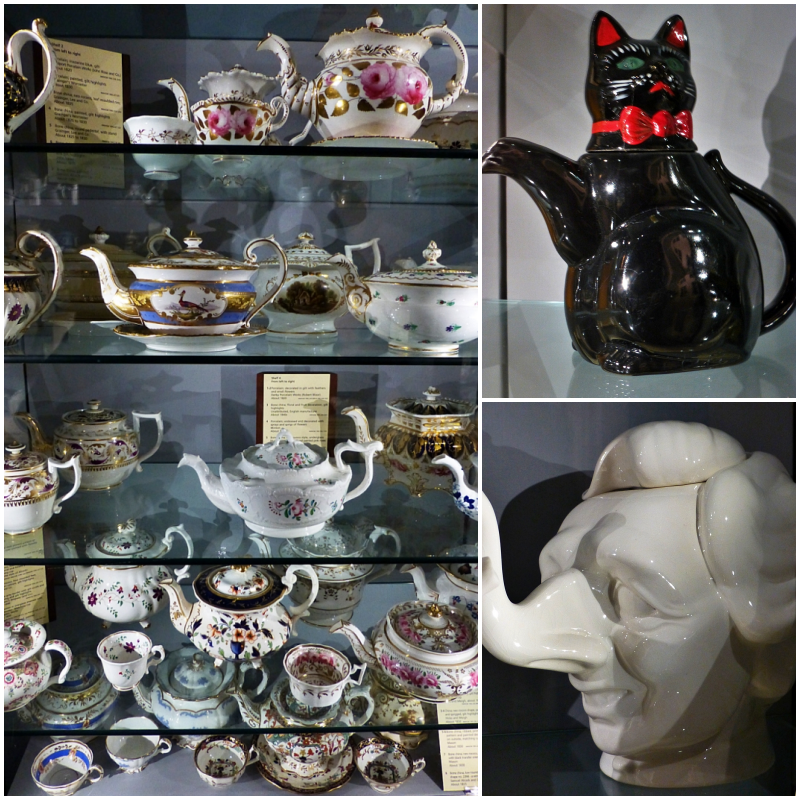 The Teapot Collection in Norwich Castle © essentially-england.com
The Teapot Collection in Norwich Castle © essentially-england.com
1851 - The Largest Teapot in the World?
Lent to the museum by Twining and Co., this enormous teapot is believed to have been made for the 1851 Great Exhibition held in Hyde Park, London. The tea pot holds over 13 gallons (60 litres) of tea, and the rumour is that during the exhibition it was used to serve Queen Victoria and Prince Albert.
From a defensive motte and bailey castle, designed to intimidate the citizens of Norwich, to a much-loved landmark that delights, entertains and informs thousands of visitors each year.
Great work, really.
Are You Planning to Visit Norfolk?
Where You Could Stay
We love this part of the country and were really sad when the holiday cottage we liked so much in Blakeney became a private home. However, it did make us research the area again and try something new - Honey Barrel Cottage in Stiffkey. Again, we were close to the salt marshes and could explore new parts of the north Norfolk coast path. So my selection of holiday cottages are spread along our favourite parts...
To see other holiday cottages in Norfolk click here. Or check out holiday cottages in other parts of England by clicking here.
Or you could try a family orientated holiday resort in Lincolnshire as there's plenty of choice...
If you need to find a hotel, then try one of these search platforms...
What You Could See and Do
Are you feeling in need of a holiday yet? Here are a few more pages that might give you ideas...
- See the seals at Blakeney Point
- Visit Castle Acre and discover its Priory and Norman castle
- Go crabbing at Cromer or Wells-next-the-Sea
- Walk around the salt marshes between Stiffkey, Blakeney and Cley-next-the-Sea and try to identify the different birds
- Take a walk around Sheringham Park and enjoy the colours of the rhododendron bushes
- Or you could try our Things to do in Norfolk page...
Check out other wonderful things to see and do in Norfolk besides Norwich Castle
